15 Best SNES Fighting Games Ever
It was a golden era for fighting game fans everywhere, but which SNES title is the final boss of this genre's tournament mode?
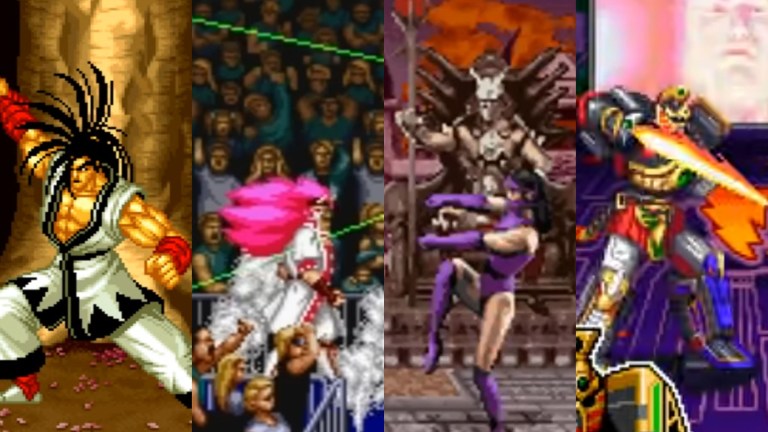
It’s really amazing how perfect the timing was between the rise of the fighting game genre and the dawn of the Super Nintendo Entertainment System. The SNES was released in late 1990 and Street Fighter II: The World Warrior hit arcades in early 1991. At the time, the 16-bit consoles were able to make decent ports of those early fighting games and, because of the design of its controllers, the SNES generally supported that genre better than the Genesis.
Everything lined up. By the time the SNES was winding down, fighters had advanced enough that the next generation of gaming hardware had trouble adapting them. The PlayStation and Saturn could not properly support the likes of X-Men vs. Street Fighter without either cutting apart the engine (the former) or adding extra hardware (the latter).
The SNES life cycle also happened to play out at a time when developers were trying to figure out how to evolve Street Fighter II’s foundation. Maybe they’d throw in some digitized actors and a little extra violence. Perhaps it was best to depict the characters as cartoon animals, claymated creatures, or crude beings made out of CG balls. Hell, make a fighting game centered around a popular rapping basketball player from the Orlando Magic! Nothing was off the table.
To celebrate the fighting game genre’s early days, I’ve put together a list of the 15 best fighters on the SNES. Two rules for the list are as follows: First, no Japanese-exclusive games. A shame, since Art of Fighting 2 would have been a contender. Second, only one entry per series. The SNES has four Street Fighter games, four Mortal Kombat games, and three Fatal Fury games. Let’s throw out some redundancies so we can get crap like Tuff E Nuff on the list.
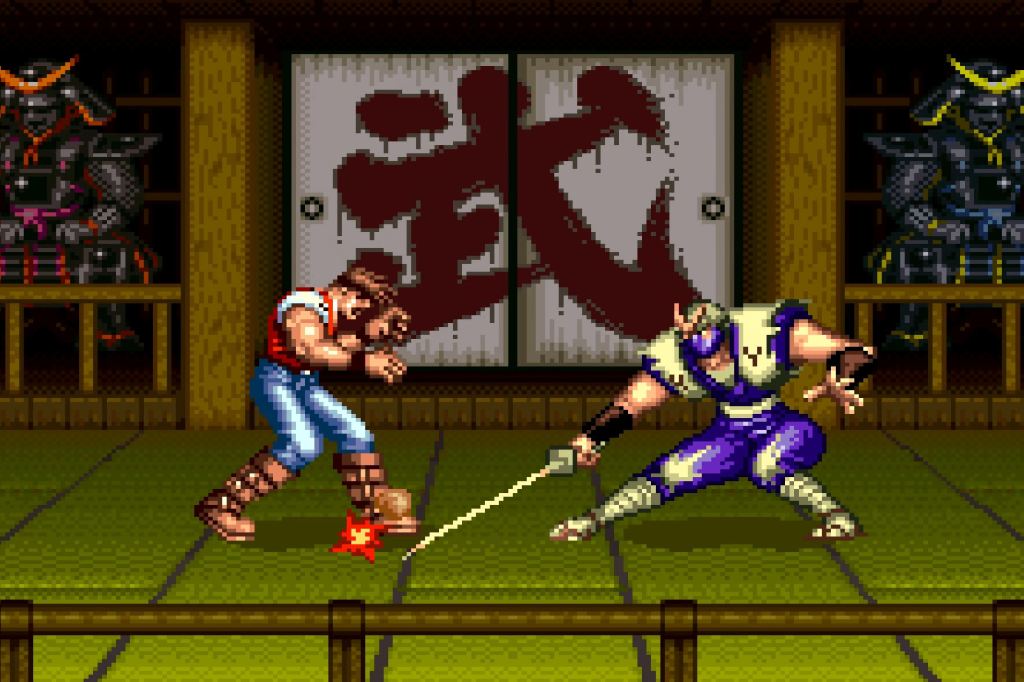
15. Tuff E Nuff
Jaleco’s Rival Turf! was a bland version of Final Fight that got by for having the two-player co-op that Final Fight was sadly missing. Tuff E Nuff (or Dead Dance in Japan) was the studio’s post-apocalyptic take on Street Fighter II, and it came surprisingly close to matching the brilliance of that monumental game.
Tuff E Nuff has some great sprite work and kickass-level designs, but it suffers from two major flaws. First off, the US and European versions lack both the endings and bloody battle damage of the superior Japanese version. Second, it suffers from the same problem that plagued the initial Street Fighter, Fatal Fury, and Art of Fighting games: only a few characters are actually playable in the main story mode. The default heroes are a lot less interesting than Dolf (who casually carries a bazooka and rides a rocket into the match for his intro), K’s (who has lengthy cyborg forearms), and Beans (whose name is Beans).
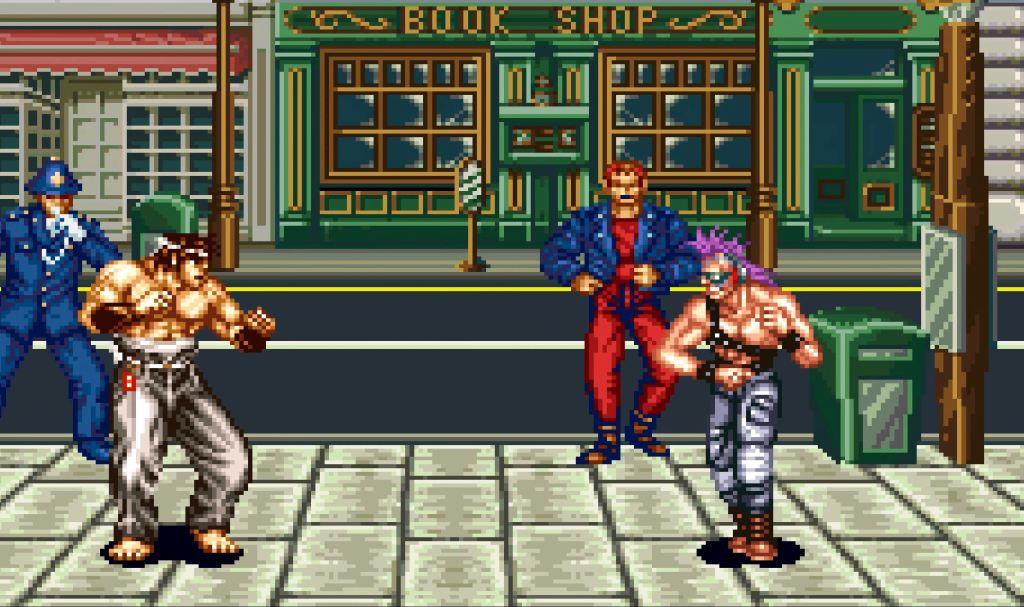
14. Fighter’s History
Fighter’s History is a hilarious footnote in the history of fighting games. The game is basically Street Fighter II with the serial numbers filed off. Capcom even sued developer Data East over their audacity. While it’s probably for the best that Capcom lost the case, I don’t at all blame them for trying. Data East was one step away from naming their characters Sven Masters and Splangief.
Still, this isn’t a Street Fighter ripoff in the way that Mac & Me is an embarrassing ripoff of ET. Fighter’s History is comedically derivative and lacking in originality but entirely competent. The only unique things it has going for it is a rather inventive “weak point” system that encourages you to “dizzy” your opponent, and the fact that the game’s final boss is Karnov. Data East just loved throwing Karnov into their games whether it made sense or not. Who can blame them?
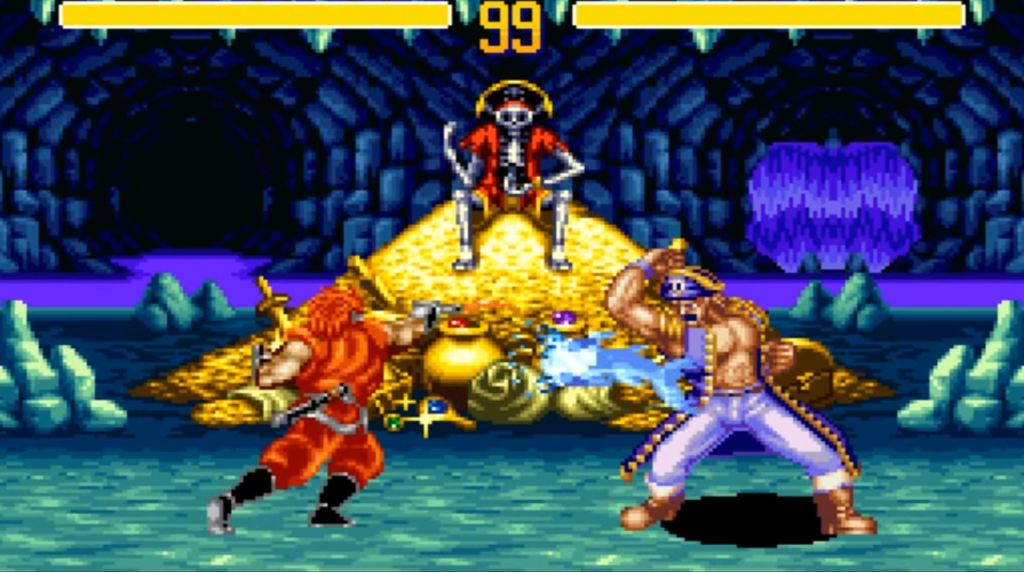
13. World Heroes 2
World Heroes is another series that scratched that Street Fighter II itch, but it didn’t stand the test of time as well as others. Even with a cast made up of vaguely historical warriors, the series’ characters have always felt rather mediocre overall. Well, except maybe the sinister-looking football player J. Maximum. I’ve always had a soft spot for him.
This sequel is easily the better of the first two World Heroes games, though, thanks largely to its slightly expanded roster that includes a pirate who can shoot fireballs in the shapes of a shark and a pirate ship. The series’ other notable unique aspect is the Death Match mode. In that mode, two characters share a health bar that goes back and forth tug-of-war style, and each stage features unique hazards. Said hazards range from buzzsaws on the ground to a stage that is simply incredibly compact. There’s even the option of fighting in a wrestling ring with barbwire ropes, which is pretty cool.

12. WWF WrestleMania: The Arcade Game
I don’t usually consider wrestling games to be fighting games by themselves, but the SNES had three that were just so off-the-wall that I feel I must count them. This is one of them.
After a trilogy of lifeless, bland WWF games that killed your thumb with so much endless button-mashing, we got this weirdo entry. WWF meets NBA Jam in this oddity of a game where digitized wrestlers have inexplicable superpowers and regularly bleed items vaguely tied to their identities.
Unfortunately, this game’s roster is limited to a mere six characters (it’s missing Yokozuna and Bam Bam Bigelow from the arcade version). It’s also missing the arcade’s bonkers endings, but that’s just as well, as the game is ridiculously hard and you’re never going to beat it anyway. Considering you have to go through the entire roster when you reach the Royal Rumble finale, it’s probably for the best that you only have six guys to take on. Despite its flaws, you gotta hand it to…Razor Ramon!

11. Mighty Morphin Power Rangers: The Fighting Edition
There were several Power Rangers games on SNES, but it is an absolute crime that this one never got a follow-up. Without a doubt, a second Fighting Edition could have easily made the top five on this list. This game would have made for a perfect base to build upon with a bigger roster, more bells and whistles, and some extra modes.
What we got instead is a pretty good, but limited, fighting title. The sprites and animation are killer, and the gameplay really nails the feel of a giant robot/monster fight. I even love that Lord Zedd is in there because it always annoyed me as a kid that he never actually fought anyone on the show. There’s just not much to do other than a regular versus mode and a simple story mode where you can only play as Thunder Megazord and Mega Tigerzord. Let me play as Goldar and show me what happens when he kills Ivan Ooze!
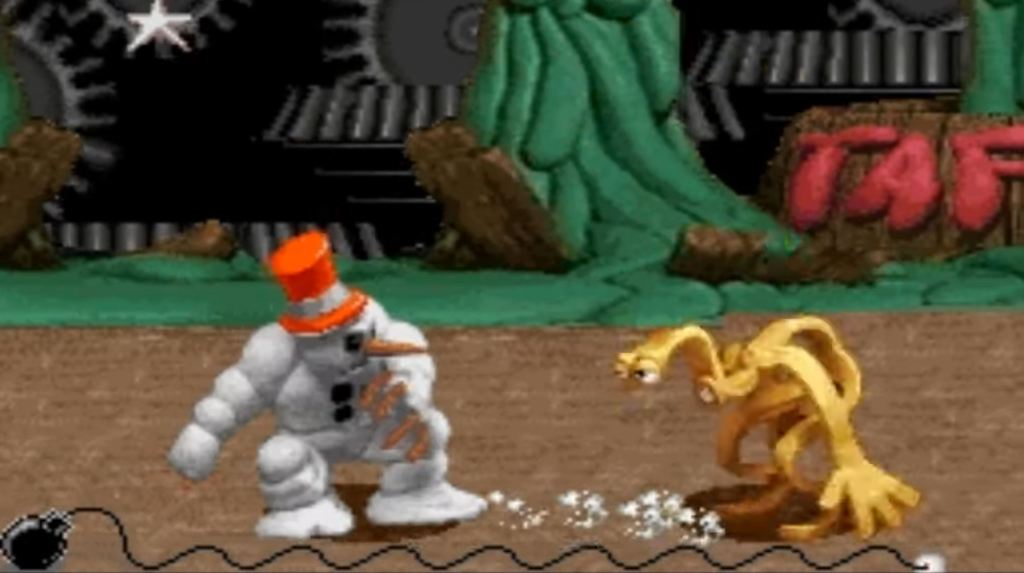
10. ClayFighter: Tournament Edition
In a gameplay sense, ClayFighter did not bring anything new to the table. It was another Street Fighter II clone with a gimmick. That said, it was a pretty fun gimmick, and the stop-motion animation still looks great. The art design and sound design are fantastic, down to the iconic announcer. It doesn’t exactly hit the sense of parody it was going for (you should hunt down its original magazine ads), but it’s such a colorful setup that I’m somewhat shocked we never got a failed Saturday morning cartoon pilot out of it.
Tournament Edition was a rental-only upgrade that did not add any new characters, but fixed some of the moves from the original version and added some extra features. More importantly, it turned Blue Suede Goo’s stage into a gigantic image of his horrific, blobby face. Speaking of ugly, the sequel, C2: Judgment Clay, never truly hit the highs of the original game and was simply a chore to even look at.
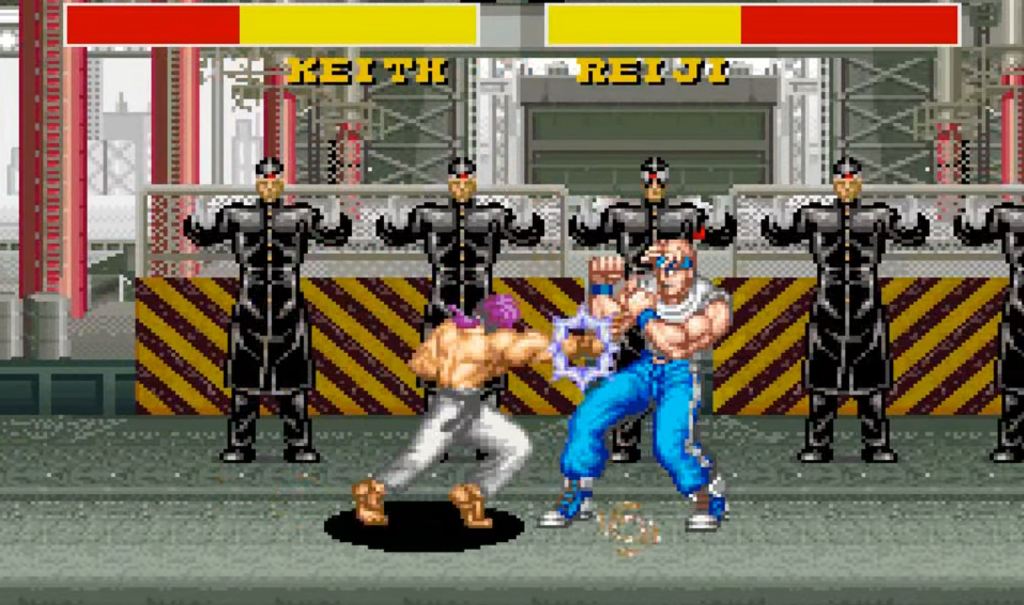
9. Power Instinct
Despite being a multi-entry fighting game franchise, Power Instinct has been forgotten by time. The main thing people remember about it is that there’s an old woman character who can use her dentures as a projectile and can suck out her opponent’s life force, temporarily turning her young. Actually, that comedic edge pairs well with this fighter’s excellent gameplay. Power Instinct was hardly a genre innovator, but its best qualities hit the right notes.
Sadly, the US version received the short end of the stick. Concepts like bios, character-specific win quotes, and even the endings got cut. The lack of endings brings down the replay value, but at least the gameplay is competent enough to stand on its own.
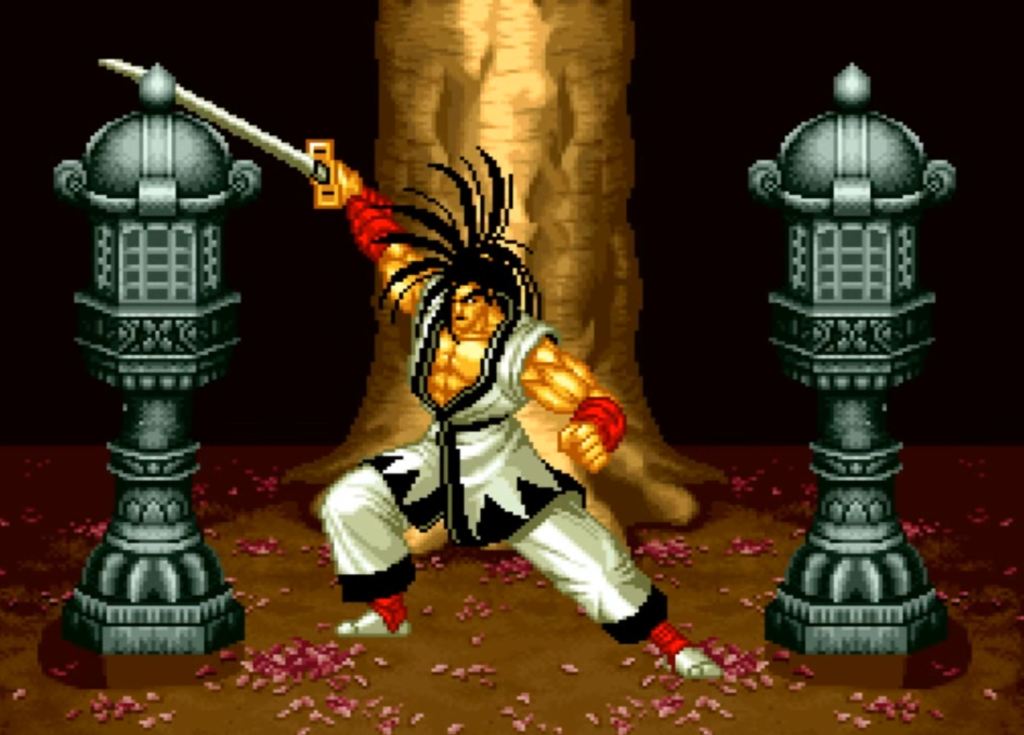
8. Samurai Shodown
An earlier entry into a genre already overflowing with options at the time, Samurai Shodown was one of the first fighting games that felt truly special. Sure, the game’s sequels and arcade original version were better, but what were you going to do? At the time, your options for a better version were to either buy an arcade machine, spend a gazillion dollars on the Neo Geo cart, or convince your parents to get you a 3DO. Yes, there was also a Sega CD version of the game, but it removed Earthquake: the overweight ninja bandit from Texas. I absolutely cannot abide by that.
Ultimately, the main drawback of the SNES version is that it lacks the cool zoom feature from the arcade. The sprites are a lot smaller, but everything else works well enough. Nowadays, ports of the Neo Geo version are easy to come by, but this 16-bit samurai swordplay was a decent choice back in its day.
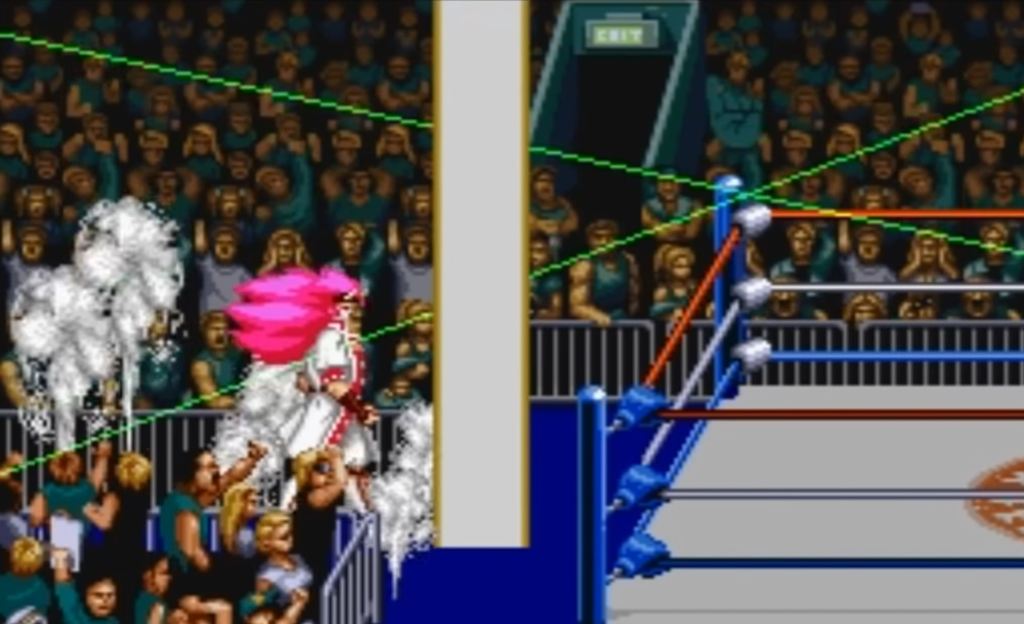
7. Saturday Night Slam Masters
As I said earlier, a few SNES wrestling games were so out there that I have to qualify them as fighters (the third one would be King of the Monsters, which did not rank on this list). With Slam Masters, Capcom assembled a wrestling game that feels like it’s set in the Street Fighter universe. In fact, narratively, it is! Saturday Night Slam Masters is part of the same continuity as Street Fighter and includes Final Fight’s Mayor Mike Haggar as one of its playable characters.
With an eclectic group of wrestlers at your disposal, this game allows you to go for the singles title or the tag titles. Everyone has near-superhuman abilities, which enables stuff like Haggar pulling off Zangief’s jumping, spinning piledriver in the middle of the ring. It’s not the deepest game, but it’s still a blast to play and it’s bursting with charm. It’s actually rather disappointing that the sequel (which never was ported anywhere) was a more blatant one-on-one fighter.
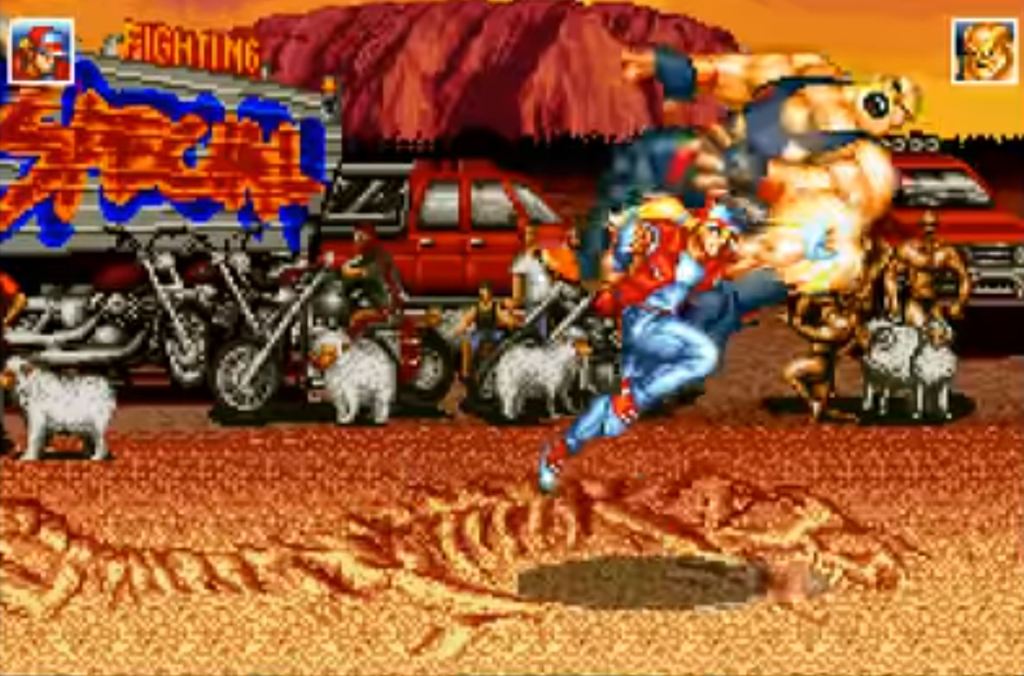
6. Fatal Fury Special
After a very rough Fatal Fury and a far better Fatal Fury 2, SNK decided to spruce up the latter title by releasing Fatal Fury Special. Not only does it feature that game’s full roster (complete with playable bosses), but it also adds four more fighters (including Art of Fighting protagonist, Ryo Sakazaki).
SNK has always been one of the top companies in the fighting genre, so it’s too bad that few of their SNES ports ever stood tall. This one definitely reaches its potential, though, even if the two-plane gameplay style never did anything for me. Due to the excessive number of characters, SNK’s King of Fighters was never going to be viable on the SNES, so at least we know that Fatal Fury Special was the best we were going to ever get from them.
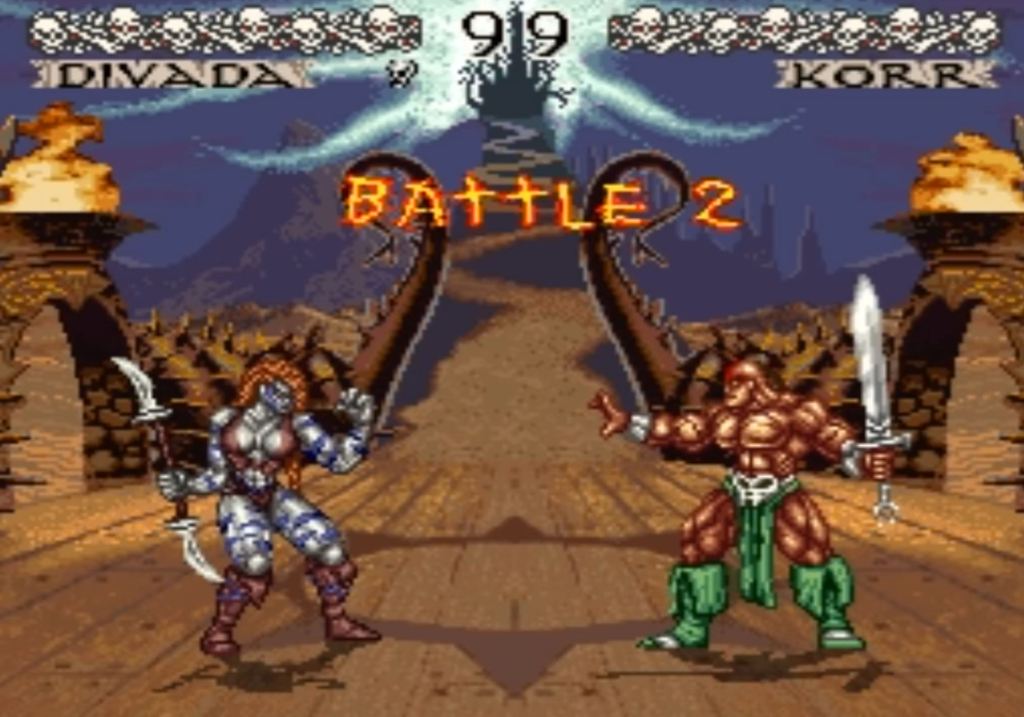
5. Weaponlord
While Namco’s most famous history-based weapons fighter is SoulCalibur, Weaponlord paved the way for that series back in 1995. This one-off 2D fighter features a cast of seven barbarian badasses cutting each other to pieces in order to prove the meaning of an ancient prophecy that would foretell the rise of the legendary demon-slaying WEAPONLORD. I typed that out and immediately heard thunder outside. The game is metal as hell. Any random screenshot from this title would make for a killer image to paint on the side of a van.
True, the animation is incredibly choppy, but the engine is delightfully unorthodox and ahead of its time. The emphasis here is on the clanging of blades, and every strategy revolves around that idea. There is parrying and even the ability to shatter your enemy’s weapon, meaning that if you try a basic button-mashing strategy, you probably won’t last very long. Give it a try and the next thing you know, a jacked dude in a wolf mask will be chopping your brains in half with a stone axe before howling at the moon.

4. Teenage Mutant Ninja Turtles: Tournament Fighter
From the late 80s to the early 90s, Teenage Mutant Ninja Turtles was the biggest deal. It was inescapable. In 1993, though, the franchise was finally running out of steam. The third movie fell flat, the classic cartoon was about to enter its infamous “Red Sky” final seasons, and the final TMNT video game released for a long time was a trilogy of very different fighting games released on three different consoles. The NES version was impressive for what it was, but not all that good. The Genesis version was a complete dud. The SNES blew them both away and felt like a strong finale to TMNT’s run as a household name.
Rather than emphasize a dramatic storyline, this game’s narrative was built around a televised fighting tournament where the winner got a bunch of money. Instead of using popular characters like Krang, Bebop, Rocksteady, and Casey Jones, the game instead skewed into the obscure by bringing in characters from the Mirage and Archie comics continuities. It brings a sense of newness that the series really needed with all the burnout that was happening at the time.
Is this another Street Fighter II clone? Absolutely. It just happens to be a clone that pulls off everything with nigh perfection. It even has super moves in it, which is somewhat rare for SNES fighting games. It’s a beloved gem to this day and one of the best reasons to pick up the Cowabunga Collection.
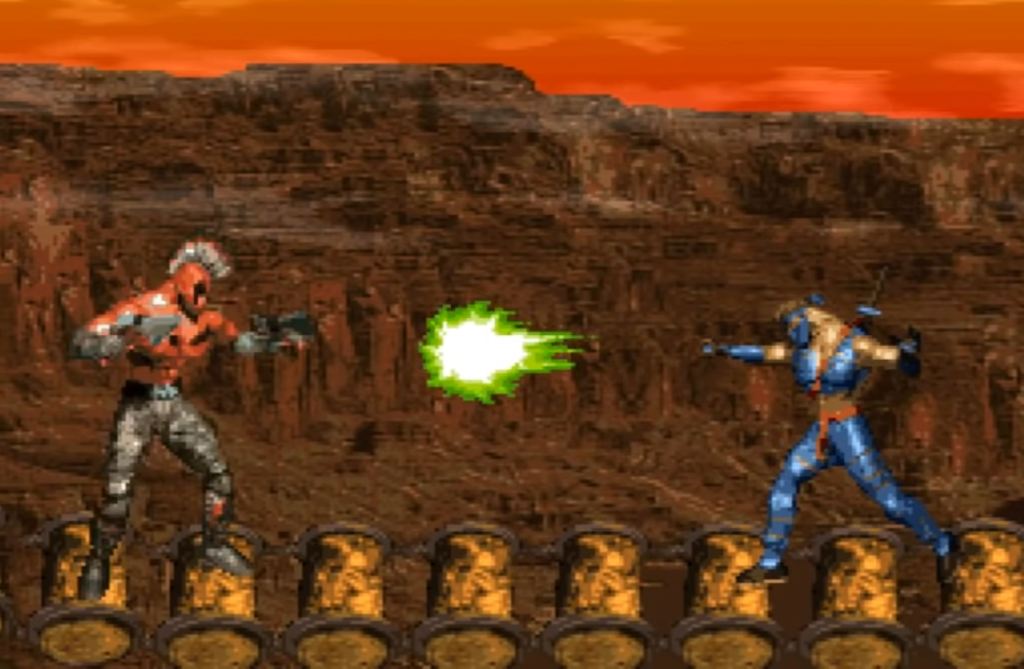
3. Killer Instinct
The arcade version of Killer Instinct was basically a big advertisement for the Nintendo 64 (then called the Ultra 64). Hyping up the home port on the arcade machine itself, that console’s delay led to the game receiving a SNES port instead. It wasn’t nearly as good as the arcade version, but it was still pretty great.
Centered around its over-the-top combo system, Killer Instinct came off as a crazy, sci-fi take on Mortal Kombat. An evil corporation has put together a tournament and the combatants include a barbarian skeleton, a cloned dinosaur, a cyborg boxer, a killer robot prototype, and other rad designs. Killer Instinct was the ’90s personified in the best way possible.
Following Rare’s success with Donkey Kong Country, the sprites were made from 3D models translated into a 2D plane. Going with its fun gameplay and impressive visuals was a soundtrack that was so top-notch that they initially released the game with a CD of it. This whole project was just a great example of how you’re sometimes better off going over the top.
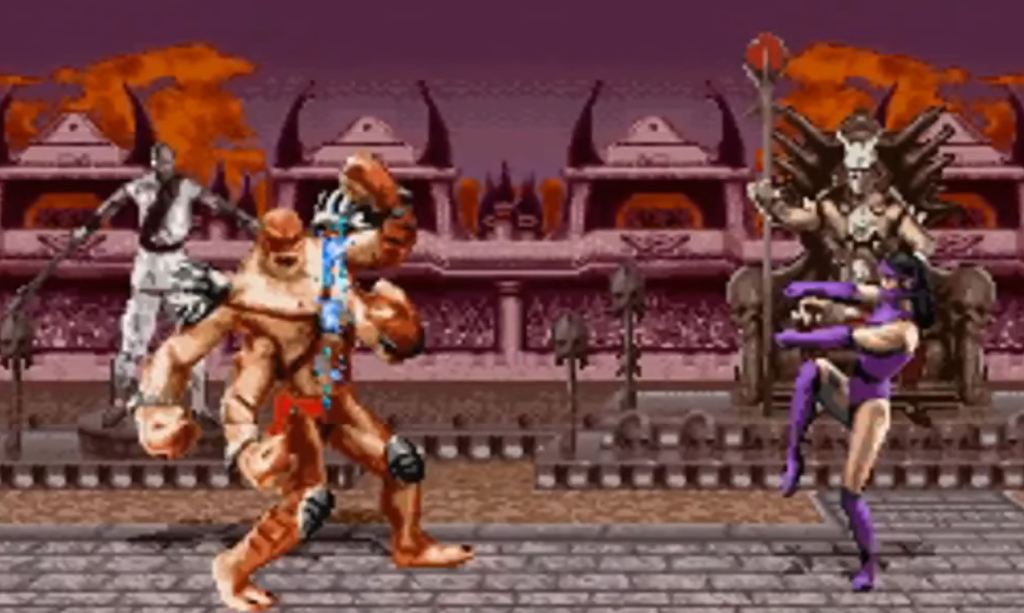
2. Mortal Kombat II
Nintendo was all for the first Mortal Kombat game being ported to the SNES, but they were stern about not putting any blood or gore in the port. The Sega Genesis allowed it, causing Nintendo to lose in head-to-head sales. Realizing that they wanted money, Nintendo decided to finally relent and allow Jax to tear off Baraka’s arms.
Of the four Mortal Kombat games to grace the SNES, Mortal Kombat II was the best. Most of the content from the arcade original is here, from the characters to the game’s many secrets (except for the ability to play Pong). While Mortal Kombat 3 and its Ultimate follow-up are exceptional in their own rights, they also felt more cartoony and excessive. MK 2 better fits that grindhouse martial arts movie vibe that the first two games established. If Nintendo was going to budge on any game, I’m glad it’s one as strong and faithful to its arcade original as this one.
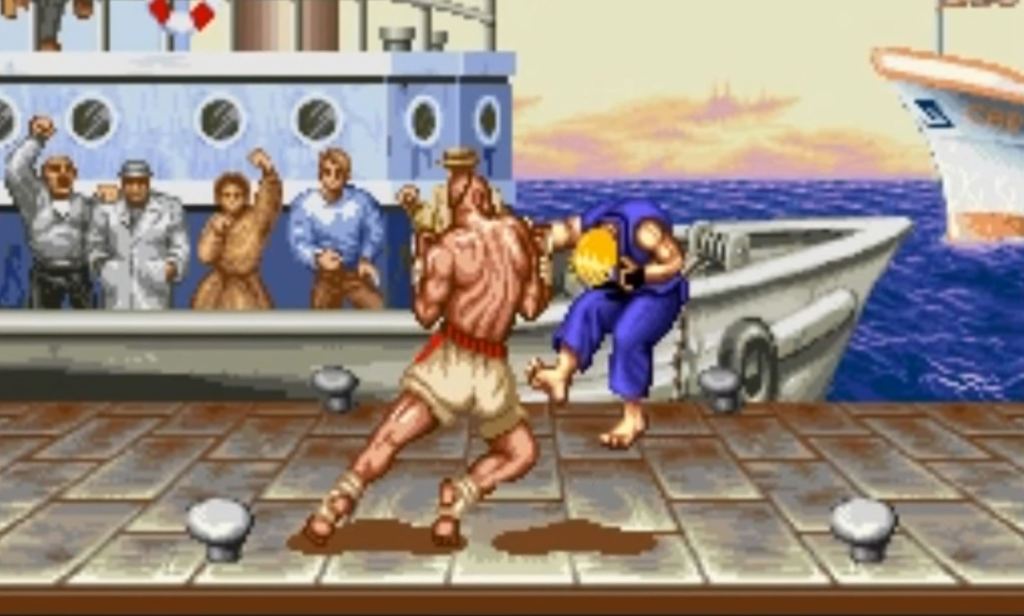
1. Street Fighter II Turbo
Of course Street Fighter had to be in the top spot. The real question is: which Street Fighter game? Now, there was an incredibly impressive port of Street Fighter Alpha 2 late in the SNES’ lifetime, but I’m not going to go there. Instead, I have to go for a version of the trailblazing Street Fighter II. The initial edition of that game was certainly a beautiful port compared to the arcade, but it was eventually improved upon twice over. Logic would also dictate that Super Street Fighter II would be the best of the bunch thanks to its extra modes and four additional fighters.
On the other hand, Super Street Fighter II suffers from a distracting hit to its sound quality. Street Fighter II Turbo not only sounds like it should in both music and impact, but it has the turbo gimmick going for it. It’s faster and feels like a stronger overall package. In the end, it comes down to weighing what each version has to offer, but to me, Cammy isn’t enough to make up for Super Street Fighter II’s flaws. Not when the game it followed is so pristine.
